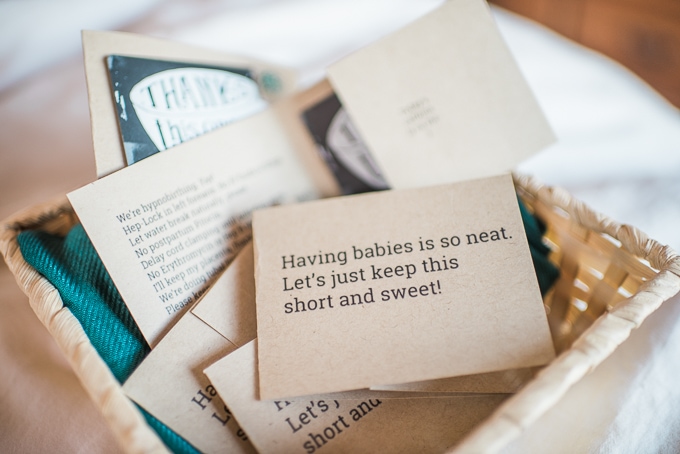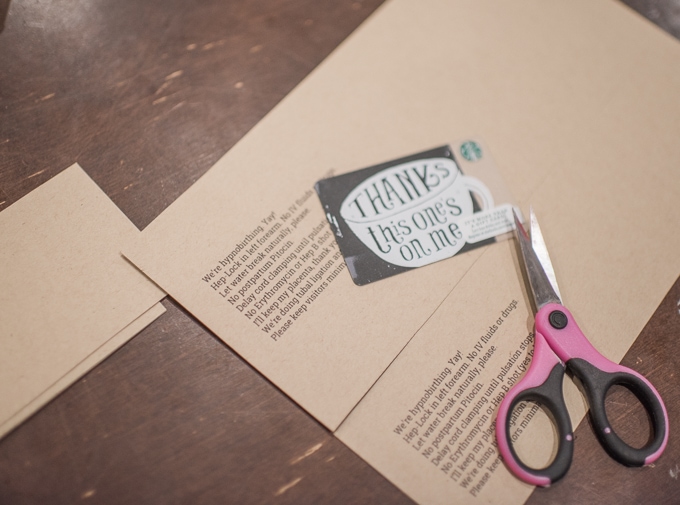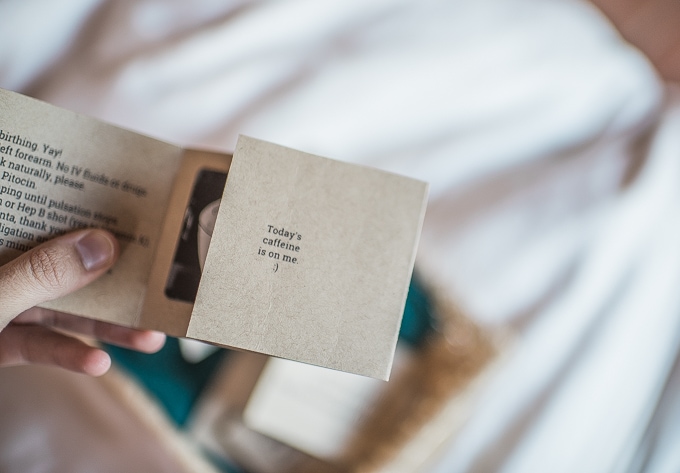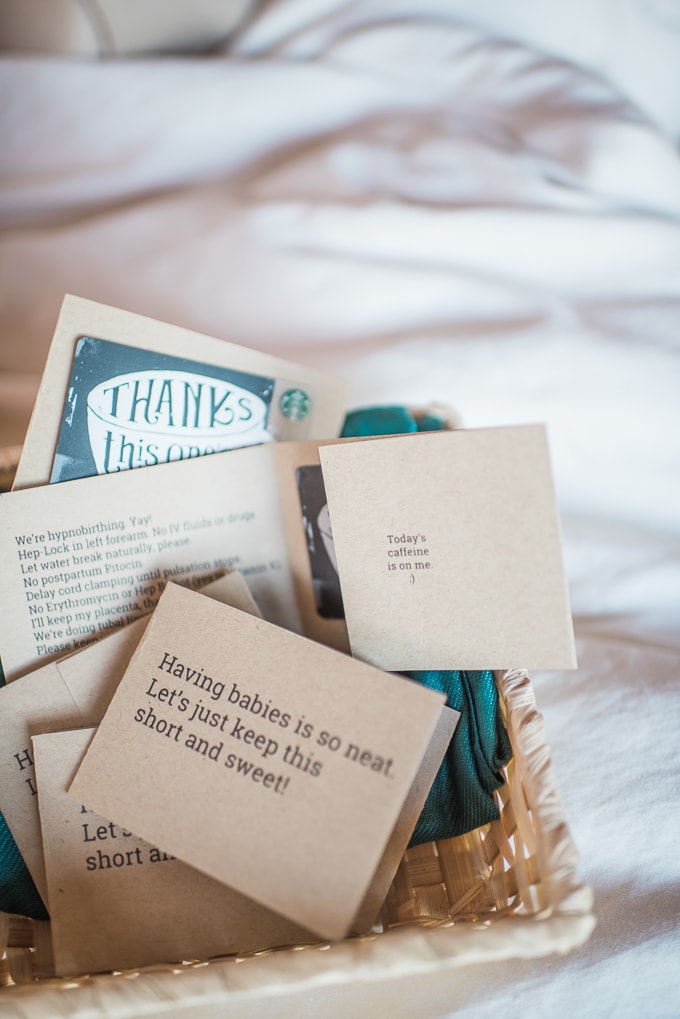When I went to the hospital to deliver my first son, I was blissfully unaware of what birthing really entailed and I had no formal plan. Things didn't go so awesome with his birth, or with dude number two. With dude number three I had a written piece of paper which the nurse promptly chucked in the trash before abandoning me to deliver my baby alone.
So with this last one, you bet your butt I came prepared. I spent hours on end condensing my important delivery and baby care notes into bite-sized, easy-to-read bullet points to make sure this baby would be brought into the world right.
And then for good measure, I shrunk it down on some card stock and attached a gift card so the hospital staff would have extra motivation to read it!
Nothing wound up going according to plan at all with this delivery, but such is life. I was still really satisfied with the ability to quickly run down the list of post-care procedures that we definitely wanted and those we wished to avoid with our last baby. It kept all the back-and-forth banter to a minimum so I could focus on quality time with the family, and it actually brought a smile to most of the nurses' faces.
First, I got my birth plan down to less than ten lines and printed it out onto a template that I'd measured to wrap perfectly around a Starbucks gift card (template link is at the bottom of this page, sit tight, we'll get to it!).
It prints two double-sided templates per sheet, which then simply need to be creased to fold into thirds with the gift card taped in the middle.
We printed out ten of them and handed them out to every single care person who walked into the room. For those who are curious about what decisions made the cut for us, here's a quick look at our notes:
- We’re hypnobirthing. Yay! – We took classes to help manage the pain on our own, and wanted to let medical staff know so they wouldn't be surprised when we dimmed lights and played soft music.
- Hep-Lock in left forearm. No IV fluids or drugs – I didn't want to have reduced mobility due to an IV, and I felt I could properly hydrate on my own. I discussed this with my OBGYN beforehand and we agreed the least-invasive and safest solution was to put a Hep-Lock in my arm to provide access in case emergency drugs needed to be administered. We specified the left forearm so it wouldn't be in the way as I tried to manage a newborn baby with my dominant, right arm. These are the little things you start to figure out after several babies!
- Let water break naturally, please – My OBGYN broke my water to speed delivery with my second child, and it wasn't an experience I wanted to repeat.
- No postpartum Pitocin – This drug is routinely given after delivery – even if you've had a natural birth – to help the uterus contract down quickly and prevent too much bleeding. I have a condition called an irritable uterus that actually causes excessive contractions, so this is a generally unnecessary and painful step for me.
- Delay cord clamping until pulsation stops – Many hospitals cut the umbilical cord immediately after delivery, but waiting until it stops pulsing allows for the natural transfer of blood cells from placenta to baby. Delayed cord clamping has been shown to lead to as much as 30% more blood volume in the baby and increased iron stores as long as 6 months after birth.
- No Erythromycin or Hep B shot (yes to Vitamin K) – These are standard injections and ointments. We like to pick and choose what we feel our baby needs immediately and delay what we feel can wait.
- I’ll keep my placenta, thank you – With my last two births, I've had my placentas encapsulated by a local service. It's made a huge difference in postpartum mood and energy levels.
- We're doing tubal ligation – If you've arranged with your OBGYN to have your tubes tied after delivery while you're still hospitalized (I did), it's a good idea to give the medical staff a heads-up so they can be sure to make the proper arrangements.
- Please keep visitors minimal, simultaneous – Hospital rooms tend to have a revolving door of people in and out – particularly if complications arise – but it's worth asking if you want to maintain an atmosphere that's as quiet and uninterrupted as possible.
To tweak this template for your own purposes, access the Google document here and click “File>Make A Copy.” Save it in your own Google Drive and then click the birth plan text boxes to edit it based on your own birth preferences and print double-sided.
I'd recommend bringing a Sharpie to black out any lines that become irrelevant as your birthing process unfolds (in my case, for example, I wound up needing IV fluids so it was confusing to still have it listed on the card for new nurses coming into the room). Remember that a birth plan serves as a guideline for the ideal scenario. Babies often have their OWN ideas about how they're coming into the world! In the end, all that matters is the safety of the mother and child.
Have your births ever gone according to plan? Did preparing notes help?




